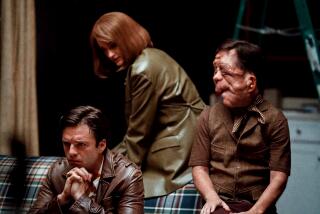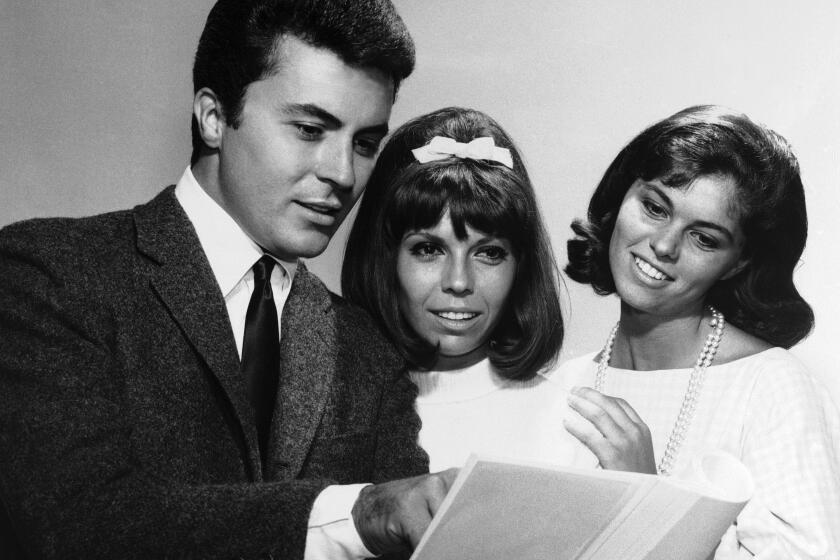Review: ‘Mapplethorpe: Look at the Pictures’ brings a complex artist into fine focus
Look, respond, discuss, repeat. At the very least, the late artist Robert Mapplethorpe’s duality-tinged, often sexually charged photography demanded a consideration of the form beyond the mere capturing of a moment in time. His work, starkly elegant and personal, inspired a few other actions as well — gasp, wince, decry, litigate — and in the new documentary “Mapplethorpe: Look at the Pictures,” directors Fenton Bailey and Randy Barbato do an ultra-fine job tracing a born provocateur’s commitment to his calling.
The timing of the film makes it, for Angelenos, a true companion piece to the comprehensive retrospectives featured at the L.A. County Museum of Art and the Getty. Bailey and Barbato even use clips of the museum curators discussing Mapplethorpe’s themes and technique as islands of analysis in the arc of a life that moved like a freight train from youthful training to adult notoriety.
SIGN UP for the free Indie Focus movies newsletter >>
Though schooled in painting and sculpture, the New York-born Mapplethorpe’s early 1970s discovery of Polaroids led to a photographic journey that coincided with a personal odyssey as an openly gay man that instilled in him a belief in the aesthetic worth of brazen sexuality. When public morality challenged that conviction, it led to protests, police raids on galleries and obscenity charges. As he was dying from AIDS in the 1980s, his fame grew exponentially.
Like many artists, Mapplethorpe struggled to match his ambitions with his artistic integrity, and the directors do a skillful job detailing how key companions/colleagues fed his rise: from his life-as-art days on the counterculture fringes with first love Patti Smith (conspicuously absent as an on-camera interviewee) to the recognition that followed his time with wealthy patron Sam Wagstaff and the male figures who inspired some of his most beautiful and controversial later pictures. Insightful remembrances come from Fran Lebowitz (a “ruined cupid,” she calls him), David Croland and Carol Squiers, among many others.
It’s a testament to the movie’s portrait of complexity that Mapplethorpe’s never-easy personality (most sensitively recalled by his younger brother, Edward, who assisted him for years) feels of a piece with explicit art that is demystifying, understandably shocking, even questionable and yet also with his praised images of flowers.
Though the title ironically appropriates Jesse Helms’ Senate floor admonition during the art-funding uproar over his work, it also acts as the simplest of incitements. His art is all over “Mapplethorpe: Look at the Pictures” as both expressions and evidence. Your reaction will be your own, just as Mapplethorpe’s short, impactful life was undeniably his.
------------
“Mapplethorpe: Look at the Pictures”
Not rated.
Running time: 1 hour, 48 minutes.
Playing: Laemmle Music Hall, Beverly Hills; debuts on HBO April 4.
More to Read
Only good movies
Get the Indie Focus newsletter, Mark Olsen's weekly guide to the world of cinema.
You may occasionally receive promotional content from the Los Angeles Times.







